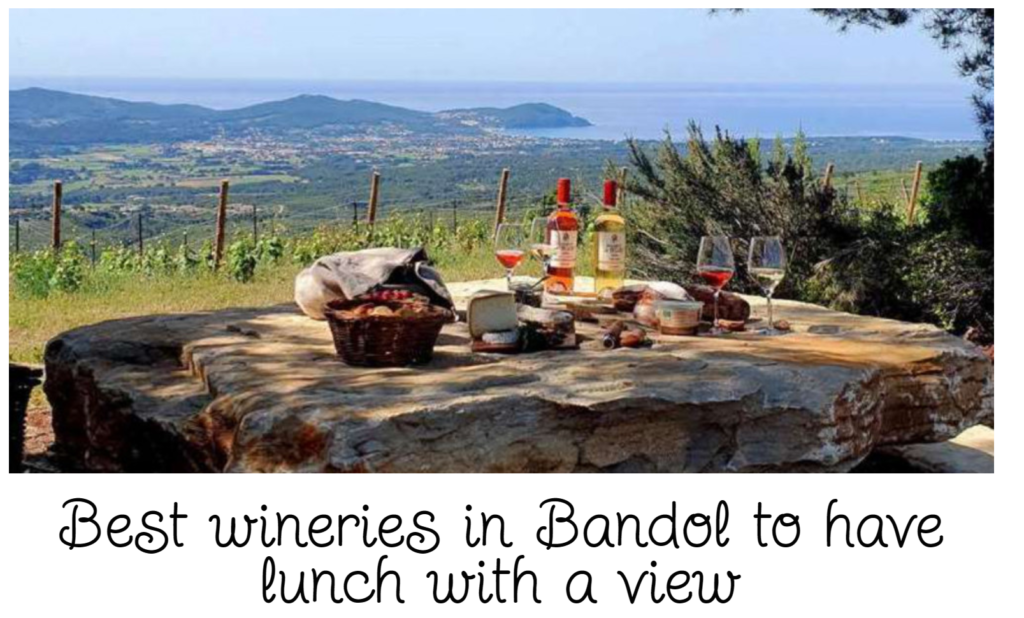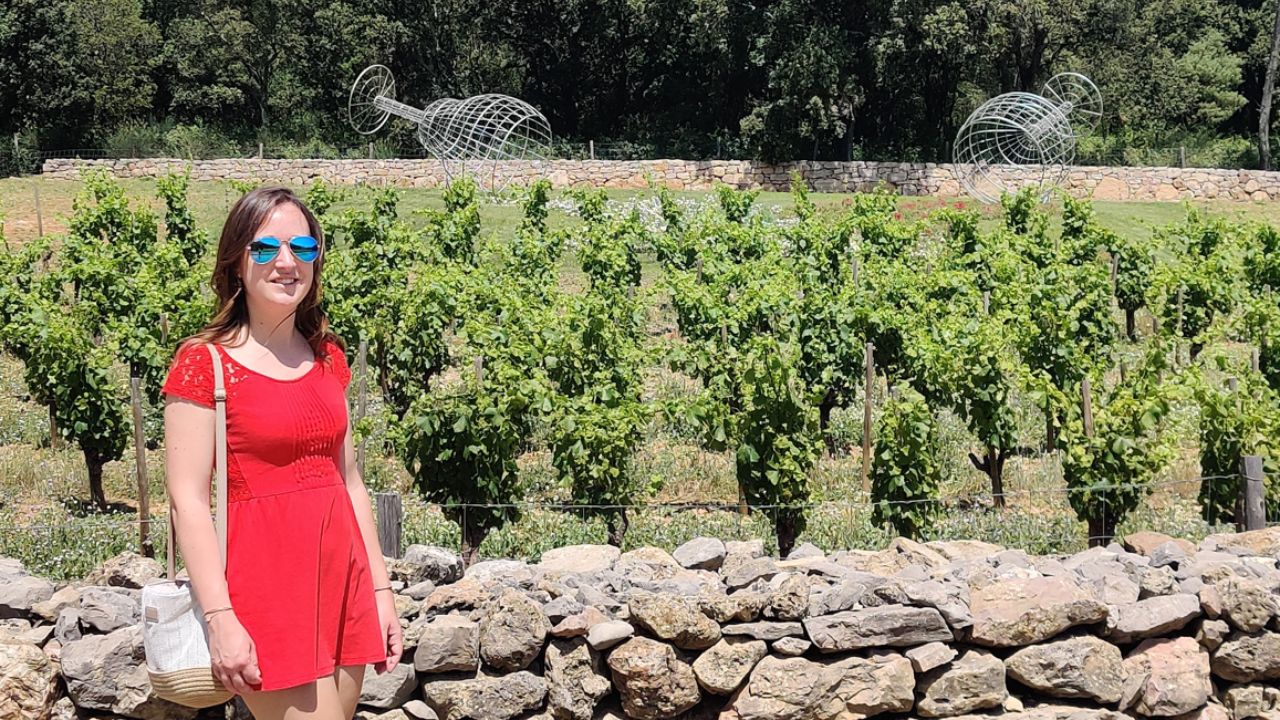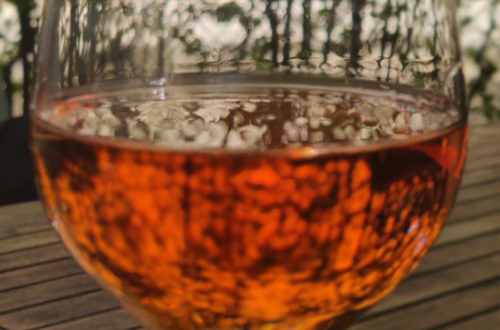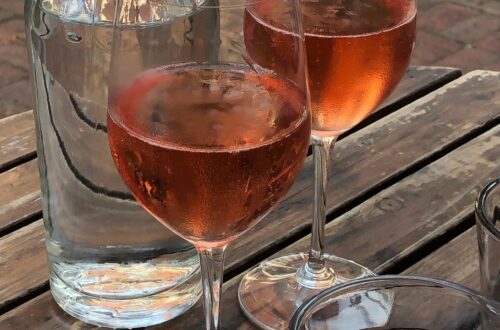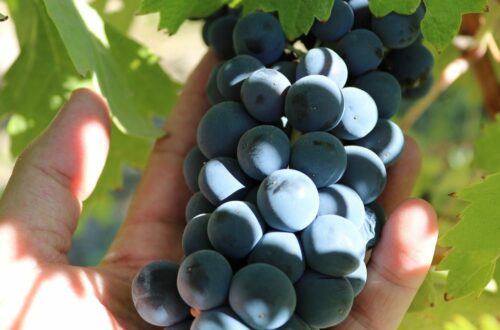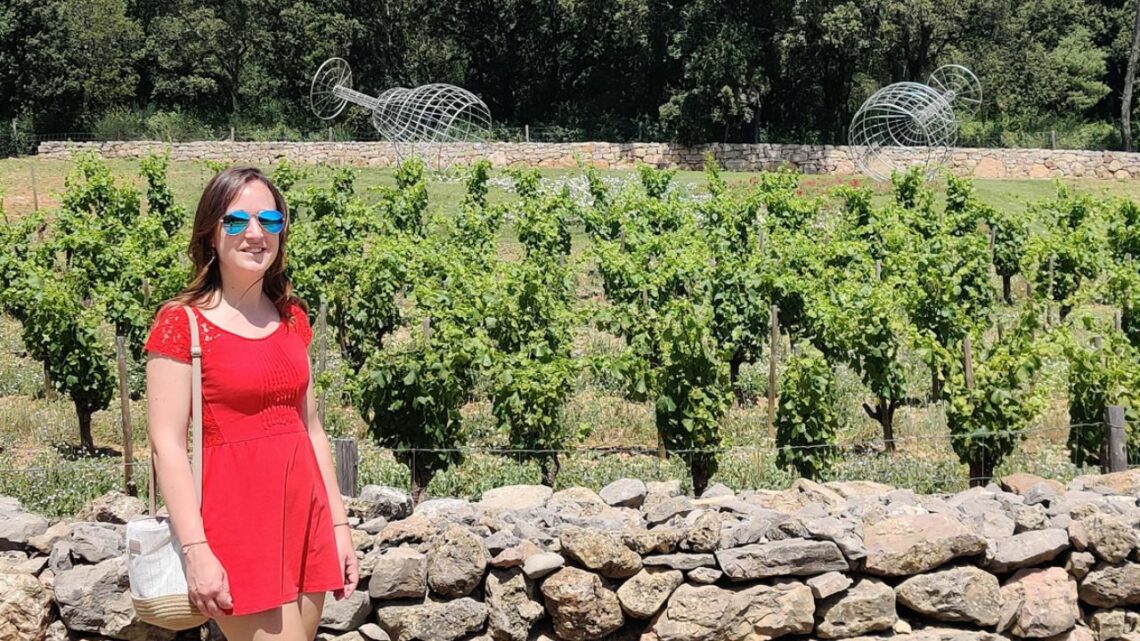
Exploring The Côtes De Provence: A Guide To The Region
Hey there, wine enthusiasts! Welcome to my cozy corner of the internet and let’s talk about my home wine for a bit : Provence!
What comes to mind when you think about Provence? I see these rolling hills, palm trees, olive groves, never-ending lavender fields, and, of course, vineyards.
If you’re into art, you’ll recognise the famous landscapes of Van Gogh and Cézanne (my family is a big fan of classical art so I’ve been to a lot of art museums!)
So Côtes de Provence might seem a little…complicated! I know it did to me when I first came to town (do you remember where I come from?) so I’ve been wanting to write a post on it for quite a while in order to simplify it and so you can boast about all your knowledge next time you’re invited to dinner!
The Wines of Côtes de Provence
Usually, when it comes to wine and Provence, rosé immediately comes to mind.
Not long ago, rosé was not considered a serious wine. Today, it is now considered as as a refreshing apéritif and a perfect companion to lighter dishes. One in ten bottles sold globally are rosé actually…all year-round.
The quality of Provence rosé wines has tremendously improved and these rosé wines are now world leaders…BUT : Provence also produces high quality white and red wines.
The white wines usually have a complex aromatic profile with notes of pears, peaches, white flowers and citrus, with a fresh acidity, which makes it perfect for the summer.
And the red wines, despite the warm climate, are not overly fruited or full bodied as you may think. These are wines with pronounced freshness and spicy notes, which of course pairs wonderfully with the Mediterranean gastronomy.
Grapes of Provence
Well, you can’t talk about wine without talking about grape varieties! I’ll get into more details about those in further posts, but here is what you should remember :
- Rosé: Grenache Noir, Cinsault, Mourvèdre (also known as Monastrell in Spain), Syrah, Tibouren (white grape used for rosé production)
- Red: Grenache Noir, Syrah, Mourvèdre, Cinsault, Cabernet Sauvignon
- White: Rolle (Vermentino), Ugni Blanc (Trebbiano), Clairette, Bourboulenc, Roussanne
So, when it comes to making rosé and red wines in Provence, there are some rules to follow.
They’ve gotta be a blend of at least two types of grapes, with at least one being a primary grape. And in that blend, the primary grapes have to make up at least half of the mix.
ANECDOTE : Rosé wines represent 91% of the wine production
And I’ll let you on a little secret : according to the syndicate, two other grape varieties might be joining the club of the authorized grape varieties for Côtes de Provence rosé! Can you guess which?
One’s called Caladoc, which is a mix of Grenache and Côt/Malbec. The other is an old-school Provençal grape called Rosé de Var.
An if it’s done by the time you read this post, be sure to comment so I can update!
Difference between Provence region and Provence wine region
Now, this is the tough subject! The Provence region and the Provence wine region are two different regions.
Provence lies in the south east of France and its name come from the fact that it was the first Roman province outside of the Italic peninsula.
Today, the official name of the Provence region is “Provence-Alpes-Côtes-d’Azur” or more commonly known as PACA. It is bordered by the Mediterranean sea in the south, by the Alps on the north-east.
ANECDOTE : There you’ll find Europe’s highest paved road : Col Bonette, at an altitude of 2715m!
The PACA region covers six departments : Alpes de Haute Provence, Alpes-Maritimes, Bouches-du-Rhône, Vaucluse, Hautes-Alpes and Var (that’s where I live!)
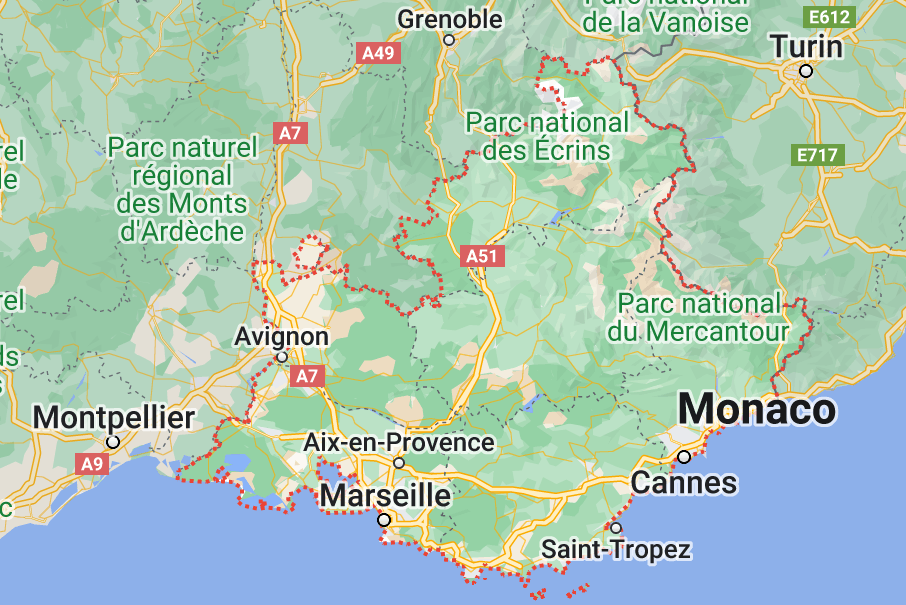
It is important to remember that the provence wine region is slightly smaller than the administrative one. For instance, the Provence region includes Châteauneuf-du-Pape (which in Vaucluse), but in wine, these are two different wine regions.
Other appellations such as Vacqueyras, Gigondas, Beaumes de Venise and parts of the Côtes-du-Rhône belong to the PACA but not the wine region.
Do you get it?
Provence wine region
For this post, we’ll focus on the Provence wine region.
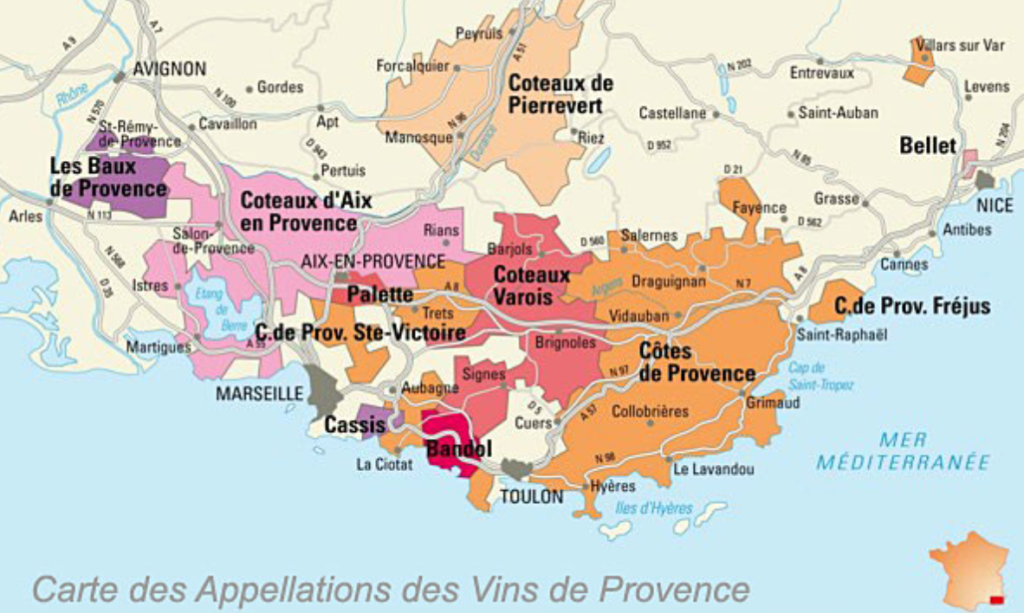
Côtes de provence is by far the largest appellation in Provence, covering 20149 ha. Compared to other famous wine region in France, Provence is slightly larger than Champagne and more than twice the size of Alsace.
The Provence wine region has 9 appellations, AOC as we call them in French. An AOC (Appellation d’Origine Contrôlée) is the French equivalent of PDO (Protected Designation of Origin) or DAC in Austria.
It refers to a specific terroir. AOC wines are wines that answer to a list of rules, describing the authorized grape varieties, vinification techniques… It’s usually really complicated.
So let’s say, an AOC is a style of wine within the region.
So, Provence is home to nine AOCs And four sub-appellations withing the Côtes de Provence appellation :
- Côtes de Provence: The largest AOC, known for its pale, dry, and elegant rosé wines made primarily from Grenache, Cinsault, and Mourvèdre. It’s further divided into sub-appellations : Côtes de Provence Sainte-Victoire, Côtes de Provence Fréjus, Côtes de Provence Pierre-feu, Côtes de Provence la Londe, Côtes de Provence Notre-Dame-des-Anges
- Bandol: Located near the Mediterranean coast, known for its full-bodied, age-worthy reds based on Mourvèdre and Grenache, often blended with Cinsault. It also produces white wines but in much smaller quantities.
- Cassis: A small AOC producing distinctive white wines made primarily from Rolle (Vermentino) and some Clairette.
- Coteaux Varois en Provence: Located in the eastern part of Provence, known for its rosé wines but also produces some red and white wines.
- Coteaux d’Aix-en-Provence: Located near the city of Aix-en-Provence, known for its rosé wines but also produces some red and white wines.
- Palette: A tiny AOC known for its unusual rosé blend that can include up to 23 different grape varieties.
- Bellet: Another small AOC close to Nice, known for its unique white wines made from Rolle (Vermentino) and some Italian varietals.
- Les Baux-de-Provence
- Pierrevert
Terroir and Climate: Shaping the Unique Profiles of Provence Wines
Due to its size, the Provence wine region has a lot of different terroirs! This explains the numerous appellations within the Provence wine region.
I’ll dedicate a whole post on the terroir of Côtes de Provence wine (you know I love talking about the impact soil has on wine), but let me give you an overview.
So, if we’re talking dirt in Provence, things get pretty interesting. Down in the southeast, you’ve got mostly rocky, crystalline soil. But move around a bit, and you’ll find it’s mostly chalky elsewhere.
Breaking it down further, Provence’s vineyard scene can be sliced into five main zones:
- Maures Massif: Picture vineyards nestled by the sea, chilling in a valley within this rocky massif. The soil? Think brown stuff made of schist, sandstone, and bits of stuff that slowly slid down the slopes over time.
- Permian Basin: This valley, sculpted by the Maures Massif’s erosion, runs in a funky arc from Toulon to Saint-Raphaël. The dirt under the vines? It’s a mix of red sandstone from the Permian volcanoes and even older granite, covered in reddish clay that makes you think of, well, red wine.
- Triassic Plateau: Head north of the Permian Basin, and you’ll hit limestone hills and valleys. Here, vines grow in soil that’s mostly a blend of red clay and limestone or the bits of stuff that tumbled down from the hills.
- Beausset Basin: a circle of white limestone around Bandol, made back in the Cretaceous period.
- Upper Basin Arc: Nestled between the Sainte-Victoire Mountain and Sainte-Baume Massif, this area’s soil is mainly a mix of sandstone, chalky clay, and bits that washed down from the limestone mountains nearby.
What about the climate? Well Mediterranean climate, a nice mild climate in winter and hot in summer!
Further inland, the climate is more continenantal seeing as mountains create a barrier between the maritime climate near the coast and the rest of Provence. So you’ll get larger variation in day/night temperatures and seasons.
Visiting Côtes de Provence: Traveler’s Guide
So when is it the best time to visit? Well, I would say all year round, thanks to our amazing climate!
But if you’re planning on visiting wineries, I would avoid late summer (mid-August-September) because it’s harvest seasons so most winemakers don’t have much time to spend with you in the cellar.
If you’re only coming for the weekend, I would avoid winter because wineries tend to close on weekends in the winter. We Provence people don’t like to go out when it’s not 31°C! Just kidding…well local people don’t anyway.
So, I would recommend May, June and July, although July can be a little (a lot) busy. October can also be a great time, it’s not yet winter so most wineries are open and usually they’re done with the harvest.
If you want to make the most of the landscapes, wine and Mediterranean food, check out my post on where to drink wine with a view.
If you’re looking to join a wine tour :
1) well, just send me an email (by answering to my newsletter) seeing as it’s literally my home region and I can draft a great tour for you
2) check out Rue des Vignerons
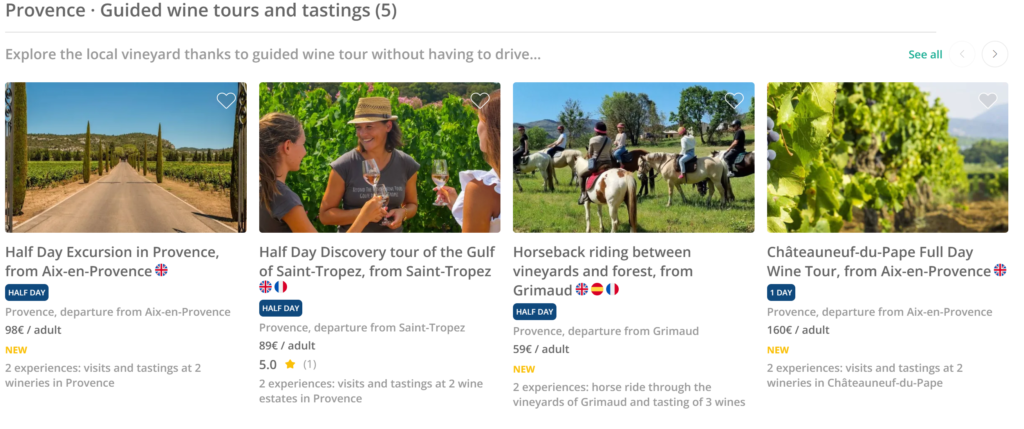
3) check out the more commonly known GetyourGuide
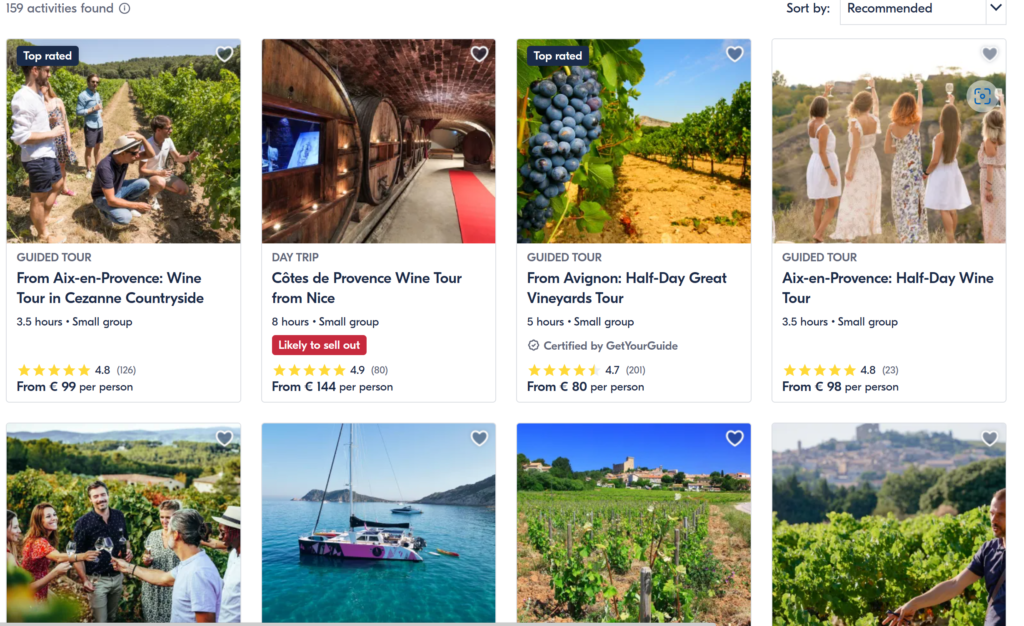
Sustainable Viticulture in Côtes de Provence
Although Austria is usually the big winner in terms of sustainability, the vineyards of Côtes de Provence, bathed in sunshine, aren’t just about making fantastic rosé anymore.
More and more producers are hopping on the sustainability train.
Here are some current sustainable practices:
- Soil Health: Keeping the soil happy is a big deal. They’re using smart methods like cover cropping to boost biodiversity, improve drainage, and stop erosion. Some are even testing out biochar, a cool charcoal-like substance, to give the soil an extra boost.
- Water Management: Water’s precious in Provence, so they’re being clever about it. Think drip irrigation and recycling winery wastewater for non-essential jobs.
- Biodiversity: Healthy ecosystems mean happy grapevines. Sustainable vineyards are all about creating homes for helpful critters like insects and birds that gobble up pests. Planting native flowers and hedgerows helps keep things in balance.
- Reduced Chemical Use: They’re keeping it natural by using fewer synthetic chemicals, like herbicides and pesticides. Organic and biodynamic methods are getting more love, which means healthier grapes and less harm to the environment.
- Renewable Energy: With all that sun, why not use it? Wineries are tapping into solar power to run their operations and cut down on carbon emissions.
They also have organic and biodynamic certifications:
- Organic Certification: It’s a strict process that keeps synthetic chemicals out of the vineyard and winery. Organic wines are a hit with eco-conscious consumers, and some big names in Côtes de Provence, like Domaine Bunan and Château de la Galinière, are on board.
- Biodynamic Certification: Taking organic up a notch, this approach looks at the big picture, even considering cosmic vibes. It’s less common but gaining traction, with Julien Castell leading the charge in Provence.
Why is sustainability shaping the future?
Sustainability isn’t just a fad; it’s crucial for the future of Côtes de Provence.
Here’s why:
- Improved Quality: Healthy soils and grapes mean better wines that truly reflect the region.
- Climate Change Resilience: Sustainable practices help vineyards adapt to a changing climate, especially with smarter water use.
- Consumer Demand: People want wines made sustainably, and Côtes de Provence is ready to deliver.
- Preserving the Landscape: Sustainable farming keeps Provence’s stunning scenery intact for future generations.
By going green, Côtes de Provence is setting itself up for a bright future, ensuring that its wines and the beautiful land they come from will thrive for years to come.
Cheers to that!
And where can you find such wines?
>> Check out Organic Wine Exchange <<
Conclusion : A guide to the region Côtes de Provence
Wrapping up! So what should you take away?
- Provence region (ie PACA) and Provence wine region are different : the latter is a part of PACA.
- The Provence wine region has 9 appellations and the largest (in France!) is Côtes de Provence AOC
- Seeing as it’s a large region, the terroir (soil and climate) will change throughout the region, so this means wines can come from the same region but be very different
- Rosés are predominant…but not alone! You’ll also find great white and red wines
Last, if you’re itching to experience the magic of Provence at home, where can you find such wines?
This post contains affiliate links but all opinions expressed here are my own.




